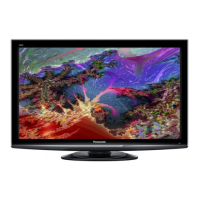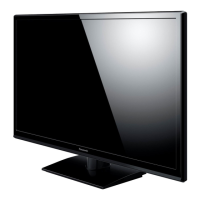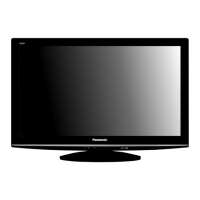Do you have a question about the Panasonic tx-lr32c10 and is the answer not in the manual?
Details on the AC power input requirements and frequency.
Information on the average and standby power usage.
Specifications for aspect ratio, screen size, and pixel count.
Key safety instructions for performing service and repairs.
Procedure for checking leakage current on exposed metallic parts.
Techniques to prevent component damage from static electricity.
Guide to identifying defective blocks based on LED blinking times.
Explanation of symbols, units, and measurement conventions used in schematics.
Comprehensive list of electrical components for service.
Details on the AC power input requirements and frequency.
Information on the average and standby power usage.
Specifications for aspect ratio, screen size, and pixel count.
Key safety instructions for performing service and repairs.
Procedure for checking leakage current on exposed metallic parts.
Techniques to prevent component damage from static electricity.
Guide to identifying defective blocks based on LED blinking times.
Explanation of symbols, units, and measurement conventions used in schematics.
Comprehensive list of electrical components for service.
| Display Type | LCD |
|---|---|
| Resolution | 1366 x 768 |
| Aspect Ratio | 16:9 |
| VGA Port | 1 |
| Component Video Input | 1 |
| Composite Video Input | 1 |
| RF Input | 1 |
| Headphone Output | 1 |
| Power Consumption | 110 W |
| Standby Power Consumption | 0.3 W |
| Screen Size | 32 inches |
| Viewing Angle | 178° |












